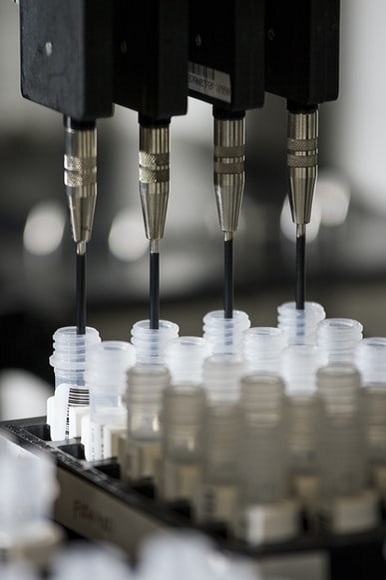Building Your PMS Templates
This document intends to cover a comprehensive framework for each of your products. Use it as a guide to direct your staff in the various parts of Post Market Surveillance (PMS) for MDR compliance!
It is impossible to simply ‘template’ the entirety that is Post Market Surveillance; however, in the reactive forms (PMCF, PSURs), we can help guide you by creating reusable documents specific to your product lines.
Post-market surveillance aims to ensure that all risks presented by a medical device have been identified and are being managed appropriately.
Post-market surveillance is a part of the risk management system. Therefore, EU MDR post-market surveillance requirements are very detailed when it comes to post-market surveillance activities.
Post market surveillance takes into consideration all the information generated by your device after it is placed on the market. This includes information provided by the users and patients as well as information gathered from other sources.
PMS Plan and Its Importance

PMS is an ongoing process of collecting and evaluating information from various sources to identify emerging device-related safety issues, characterize the risks associated with device use, develop risk management strategies, and take appropriate action when needed. The PMS activities should be performed efficiently and timely.
The Manufacturer should have in place a quality management system that is suitable for regularly monitoring the performance of its devices. The Manufacturer should be able to identify potential or actual device problems early, so that appropriate action can be taken to mitigate the risks that these problems might pose on patient health and safety and avoid unnecessary or ineffective product recalls or withdrawals.
Overview of the Regulation

MDR poses additional burdens of regulation on manufacturers in both time and resources. The most prominent of these is the Periodic Safety Update Report, which is intertwined with developing an appropriate Post Market Clinical Follow-up plan.
Demonstrating Competency
When discussing the details of specific regulations, it can be easy to get lost in the specifics of addressing the requirements with appropriate actions. The MDR has several evident gaps in the interpretation of explicit instructions.
It’s important to remember that the regulations are meant to be a guide and not a black and white work instruction (though many would argue it would help).In addition, a lot of interpretation is left up to the Notified Bodies to set the standards.
However, despite the inherent flexibility, we need to always keep in mind the essence of such regulations. The EU MDR is just another critical step towards ensuring manufacturers have greater oversight in all aspects of their product life-cycle, which needs to include safety awareness both within the manufacturing process and the end-user market effects.
At CiteMed, we urge you to read the following document with the conscious intention of adhering to the regulation in doing the best possible job to keep your products safe in the hands of their users. Complying with EU MDR and reducing issues with Regulators and Notified Bodies will not be a matter of simply executing the bullet points below, but instead importance of demonstrating responsibility as a manufacturer for the safety of your products.
Build your own post-market surveillance plan template
Here is a step by step guide on how you can build your own template:
Periodic Safety Update Reports (PSUR)
The safety update reports outlined in the MDR are loosely defined and still slightly ambiguous to many interpreters of the regulation. However, PSURs are standard in the Pharmaceutical Industry and we have drawn off extensive Pharma regulatory experience in order to bridge appropriate and comprehensive templates.
One matter of discussion with our clients will be the status of their current documentation and compliance or gap analysis. During this process, any non-compliance with the MDR for their current products can lead to a remediation plan to demonstrate a good-faith effort to reclaim the lack of proper oversight.
The following three categories mentioned in the PSUR must include data/findings referencing.
The Benefit-Risk Determination (Introspective Inspection)
The benefit-risk determination should be familiar as it is part of both your CER and Literature Search activities. We recommend using the same decision framework for creating your product Benefit-Risk conclusions, including citing relevant (timely) clinical research from an updated Literature Search.
Findings from the PMCF
Concluding remarks and any relevant data obtained from your Post Market Clinical Follow-Up activities require summation and interpretation.
The volume of device sales, categorization of device users, frequency data (if applicable)
Summaries of your device usage in the market currently need to be accurately portrayed from marketing statistics. Therefore, we recommend incorporating charts to track usage/ population over time and raw sales data.
PSUR Document Template
CiteMed’s proposed PSUR template comprises the following detailed sections. This outline was derived from the requirements set forth in MDR 2017/745 as well as standard accepted practices in the Pharmacovigilance industry where PSURs are common practice.
The UK government provides a PSUR checklist online you can download to make sure you have everything you need. It is a bit long and can be confusing if you are looking at it for the first time. Here are the sections and their details to give you some idea of what to expect and how to complete your report.
Sections:
- Metadata Information Documents: product specifications and versioning.
- Plan Implementation: Consensus of PMCF plan and approach.
- Relevant Product Data: Sales numbers and user population estimates.
- Overview of Data: Summary of data, including adverse events and recalls.
- Conclusions: Statistically supported results; data and trend analyses.
- Actions Taken: Overview of any actions taken by the Manufacturer.
- Benefit-Risk Update: Updated based on revised information.
- Conclusion: Written summaries and concluding remarks.
Post Market Clinical Follow up (PMCF)

In the MDR, PMCF is defined as a set of processes a manufacturer implements in order to actively collect and evaluate clinical data in a meaningful way.
For those attempting to build PMCF reports on their own, we recommend a similar format to those described in MEDDEV 2.7.1 for Literature Reviews. Capturing some of these initial sections can be used to highlight “new” information, impacts and benefit-risk conclusions.
Following this approach, some sections in your PMCF could be laid out in the following manner.
Search Protocol and Discussion
Clearly state your methodology of search and why it was chosen:
- Discuss specifics of search terms, databases, search method
- Provide an overview of the results (catalogue and count every article)
Additional Changes and Justifications to Search Protocol
If any new information leads to changes in the search method/approach from your original CER Literature Review, it would be prudent to make reference to those changes and provide justifications.
Your Literature Review
Your team should already have an MDR-compliant Literature Review process that is fully replicable. We recommend copying this process exactly for your updated Literature Review component.
However, If you do not have a Literature Review process or are uncertain of the level of quality required of your current documents, we are always ready at CiteMed to help you!! We provide a standardized, modular Literature Review structure that could be utilized across all required documents, including existing PMCF reports and CERs. We also have the capability to design Client specific structures to suit individual product needs.
Conclusions of Benefit-Risk and Comments on Updated Market Conditions
This section should be a rational summary that ties all the information together, which has already been discussed in detail in your Literature Review Section. Therefore, we recommend that you provide the following.
- Careful analysis of ‘Current Events’ that relate to your product
- If such events alter the overall benefit-risk, make that known.
- Conclusive remarks on the results of the Literature Search
- Were the results expected? Why or why not?
- If any new or unique information surfaces during the PMCF, include plans to closely monitor the situation and describe how future projections may be influenced in terms of Safety Incidents etc.
